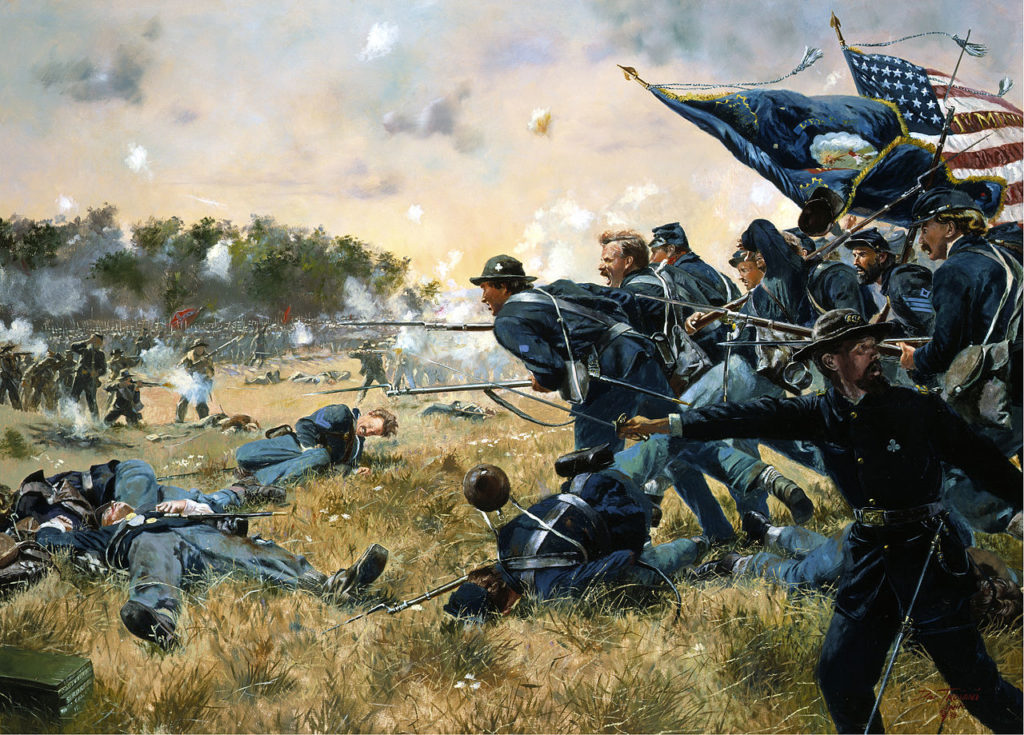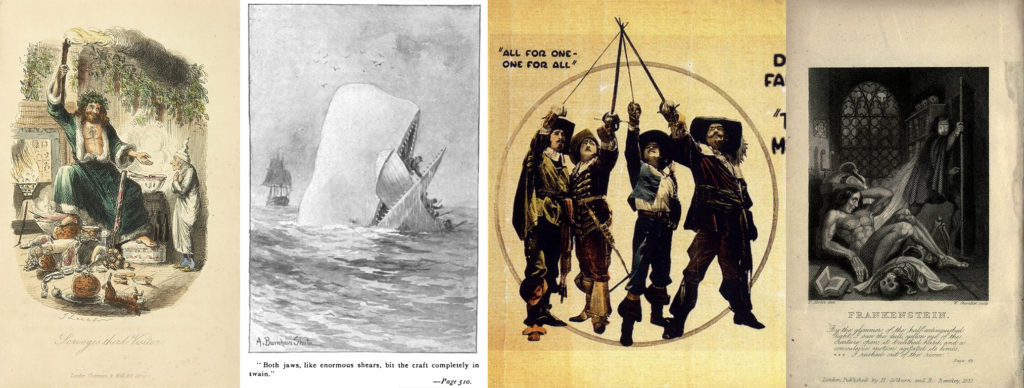Part 6: Chapter 30
The text Successful Writing stresses that when you perform research, you are essentially trying to solve a mystery—you want to know how something works or why something happened. In other words, you want to answer a question that you (and other people) have about the world. This is one of the most basic reasons for performing research.
But the research process does not end when you have solved your mystery. Imagine what would happen if a detective collected enough evidence to solve a criminal case, but she never shared her solution with the authorities. Presenting what you have learned from research can be just as important as performing the research. Research results can be presented in a variety of ways, but one of the most popular—and effective—presentation forms is the research paper. A research paper presents an original thesis, or purpose statement, about a topic and develops that thesis with information gathered from a variety of sources.
If you are curious about the possibility of life on Mars, for example, you might choose to research the topic.

What will you do, though, when your research is complete? You will need to put your thoughts together in a logical, coherent manner. You may want to use the facts you have learned to create a narrative or to support an argument. And you may want to show the results of your research to your friends, your teachers, or even the editors of magazines and journals. Writing a research paper is an ideal way to organize thoughts, craft narratives or make arguments based on research, and share your newfound knowledge with the world.
Adapted from “Chapter 11” of Successful Writing, 2012, used according to creative commons CC BY-SA 3.0 US
¶
No matter what field of study you are interested in, you will most likely be asked to write a research paper during your academic career. Boundless Writing explains that a research paper is an expanded essay that relies on existing discourse to analyze a perspective or construct an argument. Because a research paper includes an extensive information-gathering process in addition to the writing process, it is important to develop a research plan to ensure your final paper will accomplish its goals. As a researcher, you have countless resources at your disposal, and it can be difficult to sift through each source while looking for specific information. If you begin researching without a plan, you could find yourself wasting hours reading sources that will be of little or no help to your paper. To save time and effort, decide on a research plan before you begin.
Creating a Research Plan
Having to write a research paper may feel intimidating at first. After all, researching and writing a long paper requires time, effort, and organization. However, writing a research paper can also be a great opportunity to explore an interesting topic. The research process allows you to gain expertise on a topic of your choice, and the writing process helps you not only remember what you have learned, but also understand it on a deeper level.
A research plan should begin after you can clearly identify the focus of your argument. Narrow the scope of your argument by identifying the specific subtopic you will research. A broad search will yield thousands of sources, which makes it difficult to form a focused, coherent argument, and it is not possible to include every topic in your research. If you narrow your focus, however, you can find targeted resources that can be synthesized into a new argument.
After narrowing your focus, think about key search terms that will apply only to your subtopic. Develop specific questions that can be answered through your research process, but be careful not to choose a focus that is overly narrow. You should aim for a question that will limit search results to sources that relate to your topic, but will still result in a varied pool of sources to explore.
¶

If you are studying the Battle of Gettysburg, for example, you might decide to look into any number of topics related to the battle: medical practices on the field, social differences between soldiers, or military maneuvers. If your topic is medical practices in battle, any search for “Battle of Gettysburg” would return far too many general results. You would also not want to search for a single instance of surgery, because you might not be able to find enough information on it. Find a happy medium between a too broad or too specific topic to research.
Another part of your research plan should include the type of sources you want to gather. The possibilities include articles, scholarly journals, primary sources, textbooks, encyclopedias, and more. Most search engines will allow you to limit the search results by type of source. If you know that you are only looking for articles, you can exclude sources like interviews or abstracts from your search. If you are looking for specific kinds of data, like images or graphs, you might want to find a database dedicated to that sort of source.
You can also limit the time period from which you will draw resources. Do you only want articles written in the past ten or twenty years? Do you want them from a specific span of time? Again, most search engines will allow you to limit results to anything written within the years you specify, and the choice to limit the time period will depend on your topic. Determining these factors will help you form a specific research plan to guide your process.
Example of a Research Process
A successful research process should go through these steps:
-
Decide on the topic.
-
Narrow the topic in order to narrow search parameters.
-
Create a question that your research will address.
-
Generate sub-questions from your main question.
-
Determine what kind of sources are best for your argument.
-
Create a bibliography as you gather and reference sources.
Step One
Sometimes your instructor will provide a list of suggested topics. If so, you may benefit from identifying several possibilities before committing to one idea. According to Successful Writing, it is important to know how to narrow down your ideas into a concise, manageable thesis. You may also use the list as a starting point to help you identify additional, related topics. Discussing your ideas with your instructor will help ensure that you choose a manageable topic that fits the requirements of the assignment. For example, in step one, you might decide that your topic will be 19th-century literature.

Step Two
Once you have a list of potential topics, you will need to choose one as the focus of your essay. You will also need to narrow your topic. Most writers find that the topics listed during the brainstorming or idea mapping stage are broad—too broad for the scope of the assignment (see chapter six, Drafting Strategies for tips on pre-writing). Researching an overly broad topic, such as sexual education programs or popularized diets, can be frustrating and overwhelming. Each topic has so many facets that it would be impossible to cover them all in a college research paper. However, more specific choices, such as the pros and cons of sexual education in kids’ television programs or the physical effects of the South Beach diet, are specific enough to write about without being too narrow to sustain an entire research paper.
A good research paper provides focused, in-depth information and analysis. If your topic is too broad, you will find it difficult to do more than skim the surface when you research it and write about it. Narrowing your focus is essential to making your topic manageable. To narrow your focus, explore your topic in writing, conduct preliminary research, and discuss both the topic and the research with others to help you determine the focus you are most interested in exploring.

So in step two you may narrow it down to 19th-century British science fiction, and then narrow it down even further to Mary Shelley’s Frankenstein.
Step Three
Then, in step three, you would come up with a research question. A good research question will help you narrow your research. One question might be,
“How does Mary Shelley’s vision of generative life relate to the scientific theories of life that were developed in the 19th century?”
Posing a historical question opens up research to more reference possibilities.
In forming a research question, you are setting a goal for your research. Your main research question should be substantial enough to form the guiding principle of your paper—but focused enough to guide your research. A strong research question requires you not only to find information but also to put together different pieces of information, interpret and analyze them, and figure out what you think. As you consider potential research questions, ask yourself whether they would be too hard or too easy to answer.
Step Four
Next, in step four, you generate sub-questions from your main question. For instance,
“During the 19th century, what were some of the competing theories about how life is created?,”
and
“Did any of Mary Shelley’s other works relate to the creation of life?”
After you know what sub-questions you want to pursue, you’ll be able to move to step five.
Step Five
Now you will need to determine what kind of sources are best for your argument. Our example would lead us to possibly look at newspapers or magazines printed in the late 18th or early 19th century. In addition, books or essays on the topic, both contemporary and older, could be sources. It is likely that someone has researched your topic before, and even possibly a question similar to yours. Boundless Writing adds that books written since your time period on your specific topic could be a great source for further references. When you find a book that is written about your topic, check the bibliography for references that you can try to find yourself.
Step Six
As you accumulate sources, make sure you create a bibliography, or a list of sources that you’ve used in your research and writing process (keeping track of those sources will help you to create you annotated bibliography, should your instructor require one. See Chapter 35 for creating annotated bibliographies). And finally, have fun doing the research!
This chapter is a synthesis of two chapters:
Adapted from “Chapter 7” of Writing, 2015, used under creative commons CC-BY-SA 4.0 and “Chapter 11” of Successful Writing, 2012, used according to creative commons CC BY-NC-SA 3.0